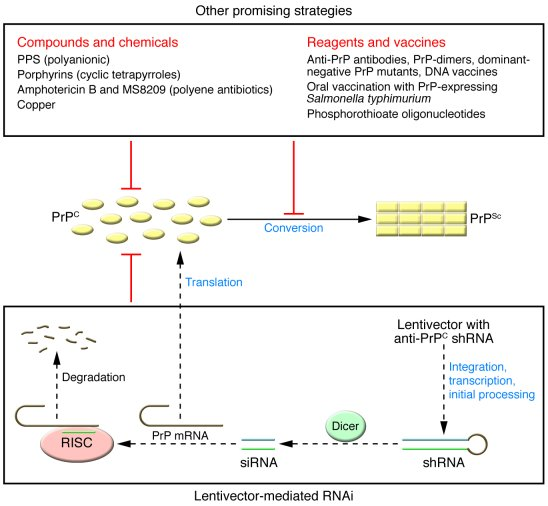Prion Disease Treatment: Promising Gene Editing Breakthrough
Prion disease treatment has made significant strides recently, offering a glimmer of hope for those affected by these devastating conditions. Research into prion diseases, which include notoriously fatal disorders like Creutzfeldt-Jakob disease and fatal familial insomnia, is advancing with innovative approaches such as gene editing therapy. These therapies aim to correct the genetic mutations that lead to the production of misfolded proteins in the brain, a hallmark of these ailments. Notably, the novel base editing technique has been shown to reduce harmful protein levels significantly in laboratory models. As prion disease research progresses, the potential for developing effective treatment options remains an exciting frontier in Neurology.
The treatment of prion diseases represents a dynamic intersection of neuroscience and genetic innovation. Often described as brain pathologies caused by abnormally folded proteins, these disorders include conditions like fatal familial insomnia and Creutzfeldt-Jakob disease, both leading to severe neurological decline. The latest advancements in gene editing and medical research hold promise for altering the course of these diseases, aiming not just for symptom management but potential cures. Techniques such as base editing are critical in reshaping the genetic foundations of these conditions, potentially offering new life to those affected. As we delve deeper into the mechanisms of prion diseases, the hope for tangible therapeutic interventions continues to grow.
Understanding Prion Diseases and Their Impact
Prion diseases, a group of rare and invariably fatal disorders, primarily affect the brain and nervous system due to misfolded proteins. Conditions such as Creutzfeldt-Jakob disease, fatal familial insomnia, and Gerstmann-Sträussler-Scheinker disease typify these ailments, which often result in severe cognitive decline and death. These diseases pose a significant burden not only on the individuals but also on their families and health care systems, as they require extensive care and medical resources.
The unique nature of prion diseases lies in their transmission and progression. They can occur due to inherited mutations—accounting for about 15% of cases—or sporadically, where proteins misfold without any genetic predisposition. This dual nature complicates research and highlights the need for a better understanding of the underlying mechanisms, which could, in turn, inform potential treatment options.
Frequently Asked Questions
What advancements have been made in prion disease treatment through gene editing therapy?
Recent research has shown that gene editing therapy using a base editing technique can significantly reduce the production of harmful prion proteins in the brain, specifically for conditions like Creutzfeldt-Jakob disease and fatal familial insomnia. This groundbreaking study indicated a 63% reduction in prion protein production in mouse models, which subsequently led to a remarkable increase in lifespan by 52%. Such advancements offer hope for potential treatments in human prion disease cases.
How does the base editing technique contribute to prion disease research?
The base editing technique is central to recent prion disease research, as it allows for precise modifications of single DNA bases in the gene responsible for producing toxic prion proteins. This innovative technique has already been successfully applied in various clinical trials for other diseases, and its application in prion disease treatment signifies a promising avenue for developing effective therapies against conditions like fatal familial insomnia and Creutzfeldt-Jakob disease.
What is the potential impact of research on fatal familial insomnia in prion disease treatment?
Research focusing on fatal familial insomnia has highlighted the importance of genetic factors in prion disease. With advancements in gene editing therapy, scientists are exploring ways to specifically target and alter the mutations responsible for this hereditary condition, showcasing that there is hope for developing tailored treatments that could potentially stop or even reverse the progression of prion diseases like fatal familial insomnia.
What challenges remain before gene editing therapy can be used in human prion disease treatment?
While gene editing therapy shows great promise for prion disease treatment, several challenges remain before it can be applied to humans. These include refining the delivery system for the base editor, ensuring targeting accuracy, minimizing side effects, and navigating the regulatory pathways for clinical trials. Researchers emphasize the need for careful validation of results in laboratory models before moving forward with human trials.
How are patient-scientists influencing prion disease treatment research?
Patient-scientists are playing a crucial role in prion disease treatment research by providing personal insights and motivation. For example, Sonia Vallabh, a scientist affected by fatal familial insomnia, has greatly influenced the urgency and direction of current studies. Their unique perspectives help drive collaborative efforts, ensuring that research is not only scientifically rigorous but also deeply connected to the real challenges faced by those suffering from prion diseases.
| Key Point | Details |
|---|---|
| Research Milestone | Promising gene-editing therapy shows potential for treating prion disease. |
| Base Editing Technique | A single base change in the prion protein gene can reduce toxic protein levels by 50% in mouse models, increasing lifespan by 52%. |
| Personal Connection | Lead researcher Sonia Vallabh diagnosed with fatal familial insomnia, motivating her and her husband to focus on prion disease research. |
| Current Status | Research is in early stages; human trials may be several years away. |
| Collaboration Importance | Collaboration among experts is crucial for effective prion disease treatment research. |
| Funding and Support | Research supported by NIH, Broad Institute and other organizations. |
Summary
Prion disease treatment is on the horizon due to groundbreaking research demonstrating that gene-editing strategies can significantly reduce harmful prion protein levels. Led by patient-scientist Sonia Vallabh, this research addresses a critical medical need and offers hope for people affected by these fatal conditions. The study marks a significant milestone, showcasing the potential for innovative therapeutics to combat prion diseases, although extensive work remains before these findings can be translated into human applications.
